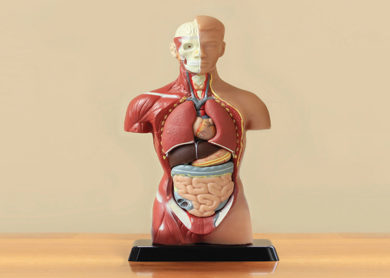Nobody really can claim to be above the need for digestive support. Perhaps unlike other areas of concern—the heart, the brain, the skeletal system—where genetic and lifestyle risk factors mean some need more help than others, virtually all individuals will benefit from improved digestion. Efficiency and balance in this area can make a noticeable difference in everything from nutrition to energy levels to life expectancy, even in people who already feel healthy and comfortable.
Then, there are the millions upon millions in digestive distress. Many suffer from the various digestive issues that the medical community has identified, while others struggle with symptoms that are hard to categorize. There are infinite gradations when it comes to digestive issues, too, from mild stomach annoyances to life-threatening conditions. It seems only a minority can claim to have no problems at all. It’s an unfortunate fact of life (and one that many think has grown more acute in modern times). That’s why probiotics, enzymes, prebiotics and a host of other helpful products and ingredients are all big sellers. Digestive concerns among your customers necessitate a working knowledge on your part about the ins and outs of this evolving category.
The Question of Digestion
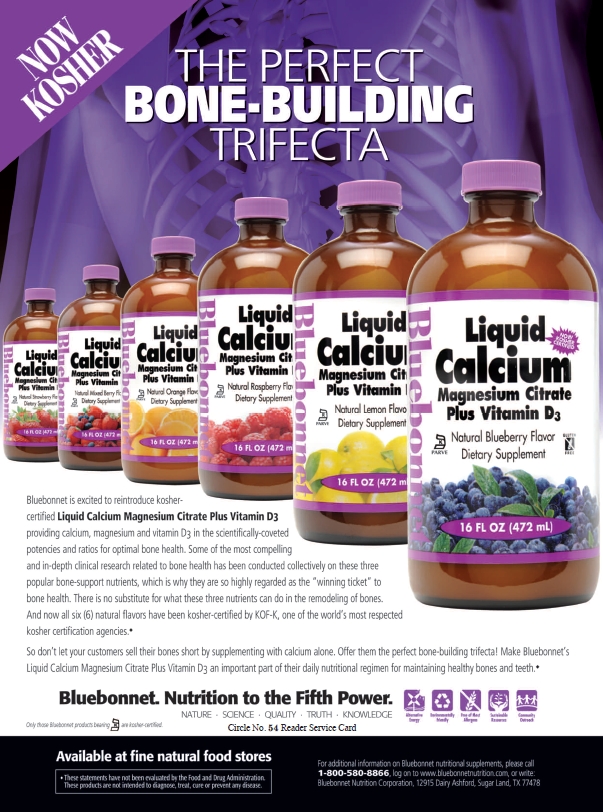 Everyone knows that the digestive system is important. Its job, after all, is to handle all of the food we eat day in, day out. Many, though, would be surprised to discover the extent of its influence throughout the body. It isn’t just one’s mood or quality of life that is at stake when digestive problems arise; they can be a warning sign of, or lead directly to, more dire health issues.
Everyone knows that the digestive system is important. Its job, after all, is to handle all of the food we eat day in, day out. Many, though, would be surprised to discover the extent of its influence throughout the body. It isn’t just one’s mood or quality of life that is at stake when digestive problems arise; they can be a warning sign of, or lead directly to, more dire health issues.
“It’s not just a question of comfort,” says Michael Shahani, chief operating officer at Nebraska Cultures, Walnut Creek, CA. He calls digestion the gateway to many other aspects of health. He explains that those with problems digesting also often face issues with weight and nutrient absorption, issues we will address more later. Shahani also points to the centrality of digestive health to our immune function.
The gut, he says, serves as a barrier between us and pathogenic bacteria. It is, as many experts put it, our first real line of defense. Shahani notes that those with digestive problems can develop issues with gut permeability, meaning that unwanted substances can cross over into the bloodstream. Probiotics may provide a defense against this, along with many other benefits about which we will learn. While he feels immune claims for probiotics require more research, Shahani explains that the proven digestive benefits of probiotics lend credence to the belief that they support immunity too, due to the close relationship between digestion and immunity.
Indeed, it is often stated that an overwhelming majority of the body’s immune activity is housed in the gut. “The intestine possesses the largest mass of lymphoid tissue in the body, including several types of lymphoid tissue that store immune cells, such as T and B lymphocytes, which attack and defend against pathogens,” says Eileen Sheets, managing director of Bioforce USA, Ghent, NY. Any imbalance in the digestive tract can therefore impair immune function, she adds.
 The intestines have the important job of providing a venue for the immune system to come into close contact with food molecules. In this way, food can be screened for compatibility with the body, explains Parris Kidd, Ph.D., chief science officer at Doctor’s Best, Inc., San Clemente, CA. “Populations of immune cells are strategically positioned in the intestinal linings to sample the intestinal contents and mobilize immune responses against offending agents as may become necessary,” he says. This monitoring process contributes to the removal or, if necessary, the management of infectious substances and foodborne toxins, Kidd says. This is one example of how having one’s digestive house in order can improve quality of life and longevity.
The intestines have the important job of providing a venue for the immune system to come into close contact with food molecules. In this way, food can be screened for compatibility with the body, explains Parris Kidd, Ph.D., chief science officer at Doctor’s Best, Inc., San Clemente, CA. “Populations of immune cells are strategically positioned in the intestinal linings to sample the intestinal contents and mobilize immune responses against offending agents as may become necessary,” he says. This monitoring process contributes to the removal or, if necessary, the management of infectious substances and foodborne toxins, Kidd says. This is one example of how having one’s digestive house in order can improve quality of life and longevity.
Jay Levy, director of sales for Wakunaga of America Company, Mission Viejo, CA, says that in addition to immunity, poor digestive health can impact seemingly unrelated areas including the skin, the cardiovascular system and the musculoskeletal system. “However, when the gastrointestinal tract is working optimally, it supports the extraction and delivery of critical nutrients to all the cells in the body and facilitates the removal of contaminants that can, over time, lead to a wide range of diseases,” he says.
Often, we learn what we will be getting ourselves into when we eat certain foods by virtue of experience. Neil E. Levin, CCN, DANLA, nutrition education manager at NOW Foods, Bloomingdale, IL, explains that those who eat foods that “don’t agree with them” will face the consequences. Foods that are not digested properly can leave protein remnants, and these trigger the release of immune cells, which can in turn lead to future immune reactions when that food is ingested, according to Levin.
The delayed symptoms of poorly digested 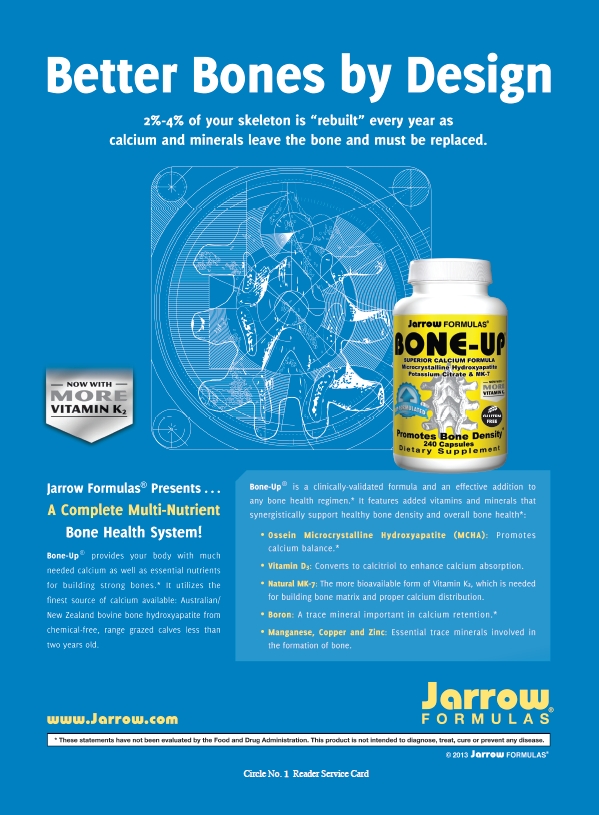 food, Levin says, often include gas, bloating, inflammation and other uncomfortable symptoms. “In extreme cases, inflammatory conditions of the GI tract create difficulties in absorbing nutrients,” he says. To make matters worse: “This can lead to overeating to compensate for the lost nutrition, which can lead to excessive sugar and fat intake, exacerbating the irritation and inflammation, triggering a vicious cycle,” says Rich Mihalik, director of innovation and product development at National Enzyme Company, Forsyth, MO.
food, Levin says, often include gas, bloating, inflammation and other uncomfortable symptoms. “In extreme cases, inflammatory conditions of the GI tract create difficulties in absorbing nutrients,” he says. To make matters worse: “This can lead to overeating to compensate for the lost nutrition, which can lead to excessive sugar and fat intake, exacerbating the irritation and inflammation, triggering a vicious cycle,” says Rich Mihalik, director of innovation and product development at National Enzyme Company, Forsyth, MO.
Of these two areas influenced by digestion, access to nutrients and immune health, consumer awareness may lag more when it comes to the latter, believes Dallas L. Clouatre, Ph.D., R&D consultant to Jarrow Formulas, Inc., Los Angeles, CA. “The first point seems straightforward—we derive nutrients from food and food requires digestion. However, most of us do not make the connection between declining health in old age and declining digestive ability,” he says.
To illustrate, he points to the fact that after the ages of 60–65, many people produce little hydrochloric acid in their stomachs. Hydrochloric acid is crucial to maintaining the proper pH balance for digestion. The ability to absorb fat-soluble nutrients also declines with old age (1). Clouatre notes that unhealthy thinness in old age can be a sign of weak digestion, stemming from an inability to absorb nutrients and maintain weight.
The importance of the digestive system can also be brought to light by viewing it as a hub for communication. “The gut-associated lymphoid tissue (GALT) connects to the digestive tract and acts as a conduit for the vast biochemical ‘communication’ between gut inhabitants (microbes) and the rest of the body,” says Brenda Watson, president and founder of ReNew Life Formulas, Palm Harbor, FL. This exchange of information underlies many of the immune processes already described, particularly inflammation, she says.
 There is also a line of dialogue open from the gut straight to the top. “The vagus nerve directly connects the brain to the intestinal tract, providing a two-way highway of communication between the brain and the gut,” Watson says. The vagus nerve is a vital branch of the nervous system, which in addition to its responsibilities in the gastrointestinal (GI) tract, controls the activity of organs including the heart (2).
There is also a line of dialogue open from the gut straight to the top. “The vagus nerve directly connects the brain to the intestinal tract, providing a two-way highway of communication between the brain and the gut,” Watson says. The vagus nerve is a vital branch of the nervous system, which in addition to its responsibilities in the gastrointestinal (GI) tract, controls the activity of organs including the heart (2).
Emotional well-being is very much influenced by this gut–brain axis. Mihalik says that digestive health has been linked to mental health and mood. One potential reason is that the gut is a neurotransmitter factory. “Much or even most of the serotonin produced in the body is in the GI tract, hence it makes sense that there should be a strong connection between digestive health and the overall level of stress,” Clouatre says.
It quickly becomes clear that it’s hard to exclude anything from the domain of influence held by the GI tract. “The delicate balance of the gut microbiota is thought to affect conditions far outside the gut, including diabetes, anxiety, autism, chronic fatigue syndrome, eczema, asthma and even heart disease,” Watson says.
Dave Barton, director of education for Enzymedica, Inc., Venice, FL, pares down the keys to digestive health, with all its implications, to the joint principles of assimilation and elimination. “Once we consume food beyond our capacity to assimilate or eliminate well, the body suffers because of it,” he says, adding that supplemental enzymes are an option to aid in this process.
The general population could sure use some aid. A quick glimpse at the numbers conveys the level of burden placed on society by digestive issues. Keeping in mind that healthcare costs have continually gone up, and that the number of people struggling with digestion is ever increasing, consider that government data from 2004 put the annual direct and indirect costs for all digestive conditions in the United States at nearly $142 billion (3).
Enzymes ‘R Us
The crucial role of enzymes in the process of digestion has really hit home with some consumers, and that is why they often head home with enzyme supplements after a trip to the nutrition store. According to Kevin Cobb, director of sales and marketing for Doctor’s Best, Inc., sales in the digestive enzymes supplements space have been growing modestly over the past several years. Specific opportunities for growth that Cobb cites include specialty enzyme products meant to relieve issues like gluten intolerance, as well as the sports nutrition market, which is turning to enzyme products in search of enhanced absorption and digestion of proteins.
In general, Clouatre believes consumers are growing more aware that processed, refined foods are far removed from their natural state, and therefore tend to be difficult to digest. Add to this the knowledge many have that digestion suffers as we age, and we wind up with a healthy demand for enzyme supplements. “You have a couple of major drivers of interest tied to the declining quality of the food supply and an aging populace. Many of the same factors that increase demand for organic foods also increase demand for enzyme products,” says Clouatre.
Though he feels more human clinical studies would help to expand the category even further, Dan Lifton, CEO of Quality of Life Labs, Purchase, NY, points to research into enzymes such as pineapple-derived bromelain as promising. “The size of the category also indicates that consumers feel that the products are working,” Lifton says.
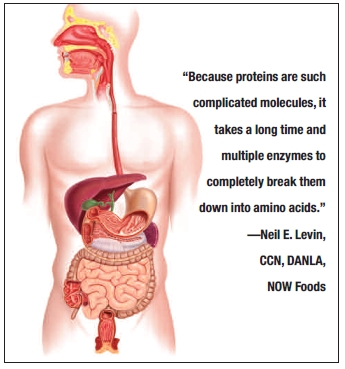 As for how enzymes actually work, Susan Mitmesser, Ph.D., director of nutrition research for American Health, Ronkonkoma, NY, explains, “Enzymes break down the nutritional components of proteins, fats and carbohydrates, making these nutrients available for the body’s energy needs, cell growth and other vital functions.”
As for how enzymes actually work, Susan Mitmesser, Ph.D., director of nutrition research for American Health, Ronkonkoma, NY, explains, “Enzymes break down the nutritional components of proteins, fats and carbohydrates, making these nutrients available for the body’s energy needs, cell growth and other vital functions.”
The stomach and pancreas, along with microflora of the colon, each produce various exoenzymes, or enzymes produced within the cell and then released, according to Reza Kamarei, Ph.D., vice president of science and technology at Sabinsa Corporation, East Windsor, NJ. These enzymes begin the process of digestion, but when not enough are produced, GI function is impaired, leading to conditions like irritable bowel syndrome (IBS), bloating and gas. Digestive enzymes from food or supplements can compensate for any lack of exoenzymes. Kamarei notes, however, that it is important these digestive enzymes themselves remain undigested by pepsin (in the stomach) or trypsin (in the intestines). In the supplements market, enteric coating can be used to avoid this problem.
When formulating supplements, there is this natural transfer from the acidity of the stomach to the alkaline conditions of the small intestine to consider. There is also the problem presented by over-the-counter (OTC) digestive aids: their down-regulation of stomach acid production, according to Kidd. Well-formulated enzyme supplements will therefore be designed, Kidd says, to operate within a broad acid–alkaline range to deal with both of these concerns.
While we don’t want our supplemental  enzymes to break down prematurely, we do want our food to be broken down by these processes. As Levin explains, the acidic environment of the stomach allows the negatively charged side-chains of proteins to be removed by pepsin. This “unwinding” of proteins involves breaking the bonds between amino acids in key places. Then, in the alkaline setting of the intestines, the positively charged side-chains are removed by trypsin, while other enzymes break the remaining amino acid bonds. “Because proteins are such complicated molecules, it takes a long time and multiple enzymes to completely break them down into amino acids,” says Levin.
enzymes to break down prematurely, we do want our food to be broken down by these processes. As Levin explains, the acidic environment of the stomach allows the negatively charged side-chains of proteins to be removed by pepsin. This “unwinding” of proteins involves breaking the bonds between amino acids in key places. Then, in the alkaline setting of the intestines, the positively charged side-chains are removed by trypsin, while other enzymes break the remaining amino acid bonds. “Because proteins are such complicated molecules, it takes a long time and multiple enzymes to completely break them down into amino acids,” says Levin.
When this process does not go well, bloating, gas, post-meal discomfort and nausea may occur, Mihalik says. Inadequately digested food can ferment and putrefy in the intestines, releasing gas and toxins that lead to symptoms. Supplemental enzymes can help to pre-digest food in the upper stomach, before it ever reaches the intestines where these issues arise. “This approach is not unlike using meat tenderizer to pre-digest some of the protein in a tough steak,” Mihalik says. The addition of tenderizing enzymes when cooking a steak can improve flavor and nutrient availability, but it can turn other foods into an unappetizing mush, he explains. In contrast, supplemental digestive enzymes, since they are taken orally, move this process past our taste buds to the upper stomach.
The action of supplemental enzymes is especially suited to benefit food intolerances, Mihalik believes. “Food intolerances are a dose-dependent sensitivity to certain food components such as lactose or gluten that results in irritation in the intestines,” he says. Pre-digesting these components in a targeted way with the appropriate enzymes can result in less irritation once the food reaches the intestines.
 There are many different kinds of enzymes, each designed to break down specific types of substances that the body needs to digest. “A broad-spectrum enzyme supplement, taken with meals, helps ensure the complete digestion of a wide range of nutrients common in the typical diet,” says Levy, adding that the chances of post-meal indigestion decline as more enzymes do their jobs.
There are many different kinds of enzymes, each designed to break down specific types of substances that the body needs to digest. “A broad-spectrum enzyme supplement, taken with meals, helps ensure the complete digestion of a wide range of nutrients common in the typical diet,” says Levy, adding that the chances of post-meal indigestion decline as more enzymes do their jobs.
In addition to proteases, carbohyrdrases and lipases for digesting proteins, carbohydrates and fats, respectively, Kidd describes an enzyme formula that provides lactase for help digesting milk, phytase for phytic acid from leafy vegetables, alpha-galactosidase and beta-glucanase for raw vegetables as well as several others. There are also potent combinations available, he says, of proteolytic, or protein-digesting enzymes like papain, bromelain and serratiopeptidase to ensure proteins are broken down into the simplest amino acid forms.
The true purpose of enzymes is to allow us to make the most of what we eat. “Nutrition should be the key approach to any digestive condition that a person suffers with,” Barton says. Enzyme supplements can add to the body’s natural enzyme resources, allowing one to better hydrolyze food down to its simplest components, assimilate the nutrients and eliminate the waste, he explains.
As supplements, enzymes can be derived from animal and plant sources, including certain tropical fruits. They can also be fermented from microbes, according to Kamarei. “Some examples of microbially derived digestive enzymes include neutral protease from Bacillus subtilis, alpha amylase from Bacillus amyloliquefaciens and lactase from Aspergillus oryzae,” he says.
Many of the enzymes found in supplements are vegetarian in origin. “Plant enzymes tend to work the longest in the widest range of conditions,” Levin says. He goes on to say that these enzymes don’t generate the biofeedback that can create a dependency on other forms of  dietary enzymes. They work in a wider pH range than those derived from animals, and can be taken any time during or after a meal to see benefits. Animal-derived enzymes, including pepsin and trypsin, are typically more limited in the types of food substrates they can break down. Because they also work in a limited range of stomach conditions, they are often enteric coated in supplements to ensure their efficacy.
dietary enzymes. They work in a wider pH range than those derived from animals, and can be taken any time during or after a meal to see benefits. Animal-derived enzymes, including pepsin and trypsin, are typically more limited in the types of food substrates they can break down. Because they also work in a limited range of stomach conditions, they are often enteric coated in supplements to ensure their efficacy.
A study cited by Barton demonstrated the ability of a proprietary enzyme blend to help optimize the metabolism of sugar, a digestive benefit that could wind up helping those struggling with metabolic syndrome (4). The study found that the supplement lowered post-meal glucose levels by 36% after 45 minutes and 59% after 60 minutes.
Enzymatic action may not always be desirable, Kamarei points out, even to achieve similar ends. “Interestingly, there are some enzyme-inhibitors (e.g. alpha amylase inhibitor from white bean) that are useful for diminishing the breakdown of starch in the gut. This could be useful for weight control or for diabetes,” he says.
Mihalik describes the growing interest in enzymes that convert starch into prebiotic fiber, which supports probiotics. Rather than serving primarily to break down food into smaller components, enzymes such as transglucosidase have, in combination with other enzymes, been shown to convert the glucose from starch into oligosaccharides, which are difficult-to-digest fiber molecules. This conversion has the benefit of delaying the absorption of some of the glucose in starch, in addition to fueling the growth of beneficial gut flora.
All Pro, No Con
Probiotics, those tiny creatures that crawl around in our yogurt, are exploding in popularity in every format that manufacturers can devise for consumer use. Here, we’ll focus on the high-potency dietary supplements that contain probiotic strains with well-researched benefits for digestive health.
 Beneficial bacteria do a lot to earn and keep their reputation. According to Mitmesser, a complex ecosystem of hundreds of distinct species of bacterial cells support functions related to digestion as well as other areas. “These include: synthesizing vitamins, producing digestive enzymes, aiding in the absorption of nutrients, maintaining the integrity of the colon lining, and supporting the immune system (after all, the intestines are the largest immune organs in the body!),” Mitmesser says.
Beneficial bacteria do a lot to earn and keep their reputation. According to Mitmesser, a complex ecosystem of hundreds of distinct species of bacterial cells support functions related to digestion as well as other areas. “These include: synthesizing vitamins, producing digestive enzymes, aiding in the absorption of nutrients, maintaining the integrity of the colon lining, and supporting the immune system (after all, the intestines are the largest immune organs in the body!),” Mitmesser says.
Though probiotics are linked with immune benefits, Shahani reiterates, “We still feel that digestion is the clearest area in which probiotics can be helpful,” as it is the subject with the most clear-cut research. His company is currently involved in human clinical trials investigating the specific digestive benefits of its proprietary probiotic strains.
Probiotics have a long history of use in supporting the digestion of dairy, Shahani says, noting the probiotics in yogurt as the prime example. Modern research has linked specific strains like his company’s DDS-1 to the enhanced production of vitamins, enzymes, folic acid and other beneficial substances. “It even produces small amounts of an antibiotic-like substance that kills off pathogenic bacteria,” he says. This effect was demonstrated in a recent study that showed a reduction in bacterial vaginosis after supplementation with a patented strain of Bacillus coagulans (5). Probiotics can also help combat both of those two opposing yet equally loathed digestive conditions, constipation and diarrhea, especially traveler’s diarrhea, which involves unfamiliar bacteria, Shahani says.
Much of the digestive health benefit derived from probiotics is  a result of their ability to normalize and balance the makeup of intestinal flora. For example, Kamarei says that when ingested, B. coagulans can withstand the acidity of the stomach. Its spores begin to germinate and thrive within the GI tract in a matter of hours. Once metabolically active, B. coagulans helps to produce L (+) lactic acid as the product of fermentation. “The main mechanism for survival and proliferation of B. coagulans is ‘Competitive Exclusion,’” Kamarei says.
a result of their ability to normalize and balance the makeup of intestinal flora. For example, Kamarei says that when ingested, B. coagulans can withstand the acidity of the stomach. Its spores begin to germinate and thrive within the GI tract in a matter of hours. Once metabolically active, B. coagulans helps to produce L (+) lactic acid as the product of fermentation. “The main mechanism for survival and proliferation of B. coagulans is ‘Competitive Exclusion,’” Kamarei says.
This means that probiotics are competing for limited nutrients with other bacteria, including harmful bacteria. In the case of B. coagulans, an extra leg up is gained by its ability to thrive in the L (+) lactic acid environment while pathogenic microbes die out. Kamarei says that B. coagulans, in particular, is a temporary resident of the GI tract that is usually secreted within seven days after administration is discontinued.
A proper balance among the bacteria populating the gut is crucial to digestive health. “When the diversity of microbes in the gut is reduced, that leads to instability in our internal ecosystem, which is associated with increased risk of inflammation, blood sugar imbalances, and obesity,” Levin says.
Maintaining a healthy, non-inflammatory environment helps with nutrient absorption, as in the case of vitamin C. When things are off-kilter in this area, probiotics can help. “Recent research has also shown that probiotics have strong anti-inflammatory properties and help with conditions ranging from colitis to allergies,” Lifton says.
 Probiotics of all kinds form colonies and communicate amongst themselves and with the cells of the body, according to Levin. Their ability to increase antibody production can promote the efficacy of vaccines and support an individual’s resistance to infection. In addition, uptake of some nutrients can actually be enhanced. “Probiotics have been shown to improve mineral absorption due to the lactic and acetic acids produced by the bacteria,” Levin says.
Probiotics of all kinds form colonies and communicate amongst themselves and with the cells of the body, according to Levin. Their ability to increase antibody production can promote the efficacy of vaccines and support an individual’s resistance to infection. In addition, uptake of some nutrients can actually be enhanced. “Probiotics have been shown to improve mineral absorption due to the lactic and acetic acids produced by the bacteria,” Levin says.
Probiotics are also a key cog in the body’s plan for determining “what will become Me and what will remain Not Me,” according to Levin. Beneficial bacteria, he says, help to form protective biofilms in the GI tract that help maintain the integrity of the gut lining, which controls what will pass into the bloodstream and what will be excreted.
All of these specific benefits add up to hope for those struggling with many different issues. “From digestive conditions such as irritable bowel to mood disorders such as anxiety, to metabolic conditions such as metabolic syndrome, gut bacterial balance plays an important role.” says Watson. To achieve that balance, she suggests supplementation with Lactobacillus and Bifidobacteria. More Bifido than Lacto is preferred, she says, to reflect the natural balance of a healthy digestive tract.
Clouatre explains that the benefits of Lactobacillus and Bifidobacteria species for conditions like IBS are an established part of the clinical literature (6). Individual needs vary when it comes to probiotics, but Clouatre says using the appropriate species, in addition to reducing inflammation, can reduce visceral hypersensitivity and stress responses. Avoiding stress is key to maintaining digestive comfort and well-being in the long- and short-term. Also, “Some strains are effective in treating bloating and flatulence, whereas others relieve gastrointestinal pain and irregularity,” says Clouatre.
Probiotics are now quite popular in 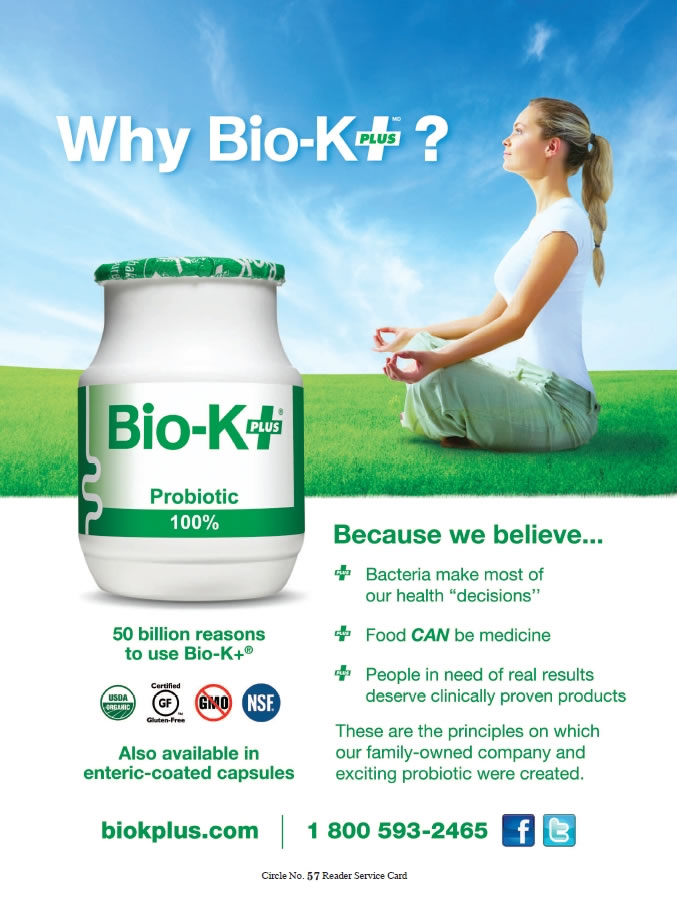 combination supplements, so long as stability can be achieved. For example, Watsonville, CA-based Nordic Naturals provides information on a supplement that combines omega-3 fatty acids from fish oil with spore-forming probiotics. The product contains over two billion stable and viable probiotic spores per serving, and the inclusion of omega-3s with the probiotics is said to promote overall digestive and gastrointestinal health and function.
combination supplements, so long as stability can be achieved. For example, Watsonville, CA-based Nordic Naturals provides information on a supplement that combines omega-3 fatty acids from fish oil with spore-forming probiotics. The product contains over two billion stable and viable probiotic spores per serving, and the inclusion of omega-3s with the probiotics is said to promote overall digestive and gastrointestinal health and function.
An important consideration in reviewing the efficacy of a particular probiotic is how long it actually hangs around in the gut. “If it doesn’t stay there, then it doesn’t matter what it does in the laboratory,” Shahani says. Though it is a transient bacteria, he says DDS-1 has been found to persist for up to two weeks, long enough to do good for digestive health. He also speaks to another probiotic (proDURA from Nebraska Cultures) that can survive at high heat, lending itself to cooking applications and even boiling temperatures due to its spore-forming nature. “It’s just a strain that’s very hardy,” he says.
Spore-formation is a quality some probiotic strains possess that allows them to remain dormant until activated by the body. This hardiness makes these probiotics suited for inclusion in many types of foods and beverages. Another spore-forming probiotic is B. coagulans GBI-30, 6086 (GanedenBC30). Mike Bush, vice president of business development for Ganeden Biotech, Mayfield Heights, OH, says, “We believe consumer awareness and acceptance of probiotics is quickly reaching the tipping point. Increasingly, consumers are looking for probiotics in sources other than yogurt or supplements.” For more on the trend of probiotics in food, see this month’s feature on digestive health foods.
 Efficacy in the probiotics space also depends upon the state of the probiotics at the time of consumption, not just at the time of manufacture or purchase. Levin says that his company’s micro lab allows it to assay every lot of probiotic material it makes, providing accurate freshness dating in the process.
Efficacy in the probiotics space also depends upon the state of the probiotics at the time of consumption, not just at the time of manufacture or purchase. Levin says that his company’s micro lab allows it to assay every lot of probiotic material it makes, providing accurate freshness dating in the process.
Pro- or Anti-? A Difficile Question
There are, of course, medical treatments aimed at improving the digestive conditions that probiotics help to address. One such solution is interesting, in that it involves antibiotics, the apparent nemesis of probiotics and pathogenic bacteria alike. But in the context of two recent studies, antibiotics were put to the same task given in some cases to probiotics: the improvement of irritable bowel syndrome (7). Rifaximin, an antibiotic currently used to treat diarrhea in travelers but not yet approved for IBS, was given to around 1,200 IBS patients or a placebo pill three times a day for two weeks.
While the results were not overwhelming (about 40% of subjects taking the antibiotic improved, while just under one-third improved with a placebo), those that did improve saw symptoms including bloating, abdominal pain and loose stools substantially relieved for two weeks. It would seem as if the killing off of harmful bacteria helped in some cases to improve IBS. How does this connect with the use of probiotics?
Watson starts off by commenting that if a study shows a non-absorbable antibiotic like rifaximin to improve a health condition, it is a good bet that the condition involves dysbiosis, or an imbalance of gut microorganisms. “The dysbiosis may be an overt infection, or a milder imbalance that was undetected. When these types of antibiotics are found helpful for any health condition, it is as an indication that probiotics would also be helpful, due to the underlying bacterial imbalance,” she says. Antibiotic use alone can lead to further complications such as C. difficile infections in cases like this, she adds. This could potentially be avoided by using a probiotic in combination with the antibiotic, a strategy which may also prove more effective at addressing the condition.
The antibiotic in this case has poor oral  bioavailability, allowing it to reach the colon, says Kamarei. If its benefits are derived from impacting colonic bacteria, it seems reasonable to assume that at least some cases of IBS can be influenced by imbalanced colonic bacteria, he says. Probiotics, meanwhile, attach to the walls of the GI tract. “That’s what keeps the pathogenic bacteria—things like e. coli, shigella, salmonella—from making one sick. They don’t have any place to hang onto, because those spaces are already taken up by the probiotic bacteria,” says Shahani. It is this competitive exclusion that may account for any shared benefits between pro- and antibiotics; one competes with bad bacteria, one kills them.
bioavailability, allowing it to reach the colon, says Kamarei. If its benefits are derived from impacting colonic bacteria, it seems reasonable to assume that at least some cases of IBS can be influenced by imbalanced colonic bacteria, he says. Probiotics, meanwhile, attach to the walls of the GI tract. “That’s what keeps the pathogenic bacteria—things like e. coli, shigella, salmonella—from making one sick. They don’t have any place to hang onto, because those spaces are already taken up by the probiotic bacteria,” says Shahani. It is this competitive exclusion that may account for any shared benefits between pro- and antibiotics; one competes with bad bacteria, one kills them.
But there’s a catch. “When the digestive problem stems from harmful bacteria, an antibiotic may be effective. However, antibiotics kill indiscriminately—both the good bacteria and the bad,” notes Levy. Long-term or frequent antibiotic use can lead to dysbiosis. He says for this reason it is critical to take supplemental probiotics along with antibiotics for any purpose, including IBS.
“There is convincing evidence to show that antibiotics destroy intestinal flora and as most clinicians know, patients taking antibiotics suffer digestive discomforts. So using probiotics concurrently with antibiotics helps reduces those discomforts,” adds Lifton.
The negatives associated with some antibiotics render them a short-term solution in the eyes of Clouatre. He says the best control of bacterial species in the gut is always with other, friendly bacteria. He therefore sees the studies in question as a signal to turn to the proper use of probiotic supplements for help.
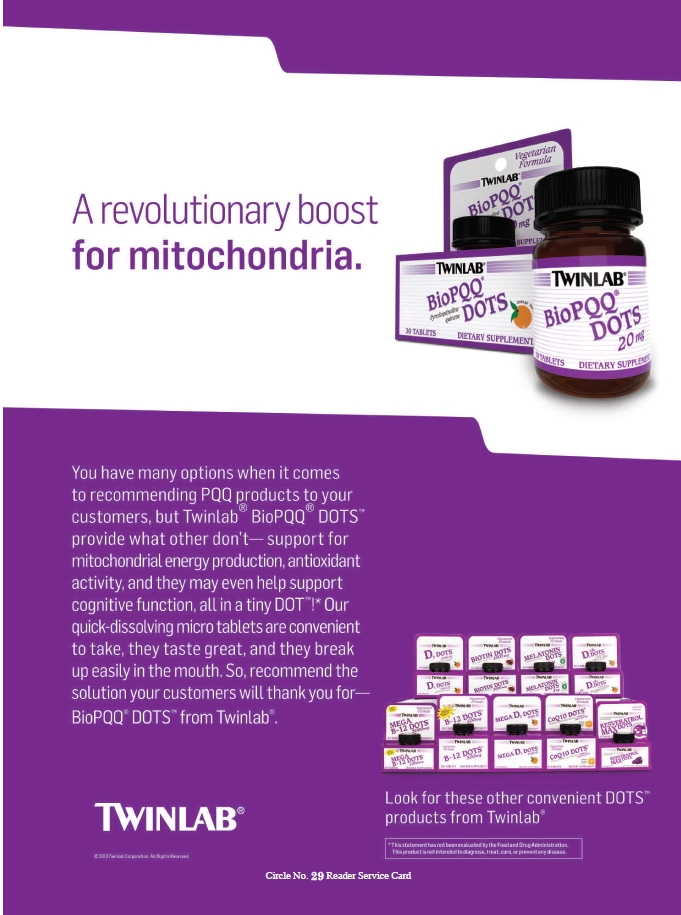 If the mechanism behind some cases of IBS is the overgrowth of one microorganism, Mihalik suggests that the key to balancing this equation is having various competing probiotics make up one’s intestinal flora. He says, “One easy way to balance your probiotic flora is to take a high quality probiotics containing multiple probiotic strains.”
If the mechanism behind some cases of IBS is the overgrowth of one microorganism, Mihalik suggests that the key to balancing this equation is having various competing probiotics make up one’s intestinal flora. He says, “One easy way to balance your probiotic flora is to take a high quality probiotics containing multiple probiotic strains.”
Fiber, Prebiotics and Other Digestive Support
In many ways, the most basic dietary means of promoting proper digestion is with fiber. It is a powerful influence on the outcomes of digestive processes, and like other areas related to digestive health, one’s fiber intake has a profound impact on overall health. In fact, a government study has found that eating a diet rich in fiber from whole grain sources reduces one’s risk of dying from various causes, such as heart disease, pneumonia and infectious diseases (8).
These results may in part be due to other nutrients present in whole grains besides fiber, as other sources of fiber were not found to be quite as protective. But the type of fiber ingested is known to be of vast importance to digestion, and this is a good place to start figuring out why fiber can be so healthy. Soluble fiber, says Mitmesser, is dissolved in water and forms a jelly-like bulk in the small intestine. It works most of its magic here, since soluble fiber gets destroyed by bacteria in the large intestine. Insoluble fiber can’t be dissolved in water, she says. It makes its way to the colon where they add bulk and help retain water, making stools softer and larger, which can boost motility.
The problem is that we don’t get enough of either type. “According to the American Dietetic Association, the average American eats only about 12–17 g of fiber per day, far less than the recommended daily intake of 20–35 g,” Mitmesser says. Only about one-quarter of that fiber intake is soluble fiber, meaning the average American eats only 3–4 g of soluble fiber each day, well below the recommended 5–10 g.
Lacking adequate fiber means that toxins 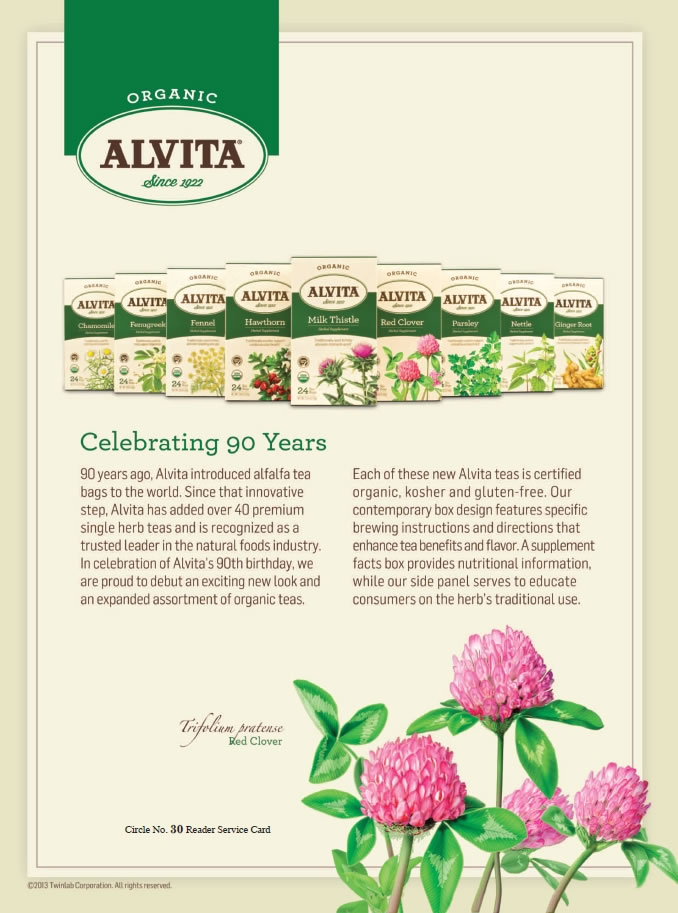 disposed of in the bile can be reabsorbed several times over before being eliminated. They can then influence the health of the cells lining the large intestine, says Clouatre. It is also important that we take in fiber that supports the growth of beneficial bacteria (a trait for which some types of fiber are called prebiotics). Clouatre says research shows the colonization of the gut by friendly bacteria can improve peristalsis, or contraction that drives digestion, in the colon. This is accomplished in part by the lowering of colonic pH by bacteria, which enhances peristalsis and decreases digestive transit time, helping to maintain regularity. Gut bacteria are also responsible for the bulk of the stool, and they help to maintain gut fluid balance and prevent diarrhea, according to Clouatre.
disposed of in the bile can be reabsorbed several times over before being eliminated. They can then influence the health of the cells lining the large intestine, says Clouatre. It is also important that we take in fiber that supports the growth of beneficial bacteria (a trait for which some types of fiber are called prebiotics). Clouatre says research shows the colonization of the gut by friendly bacteria can improve peristalsis, or contraction that drives digestion, in the colon. This is accomplished in part by the lowering of colonic pH by bacteria, which enhances peristalsis and decreases digestive transit time, helping to maintain regularity. Gut bacteria are also responsible for the bulk of the stool, and they help to maintain gut fluid balance and prevent diarrhea, according to Clouatre.
He goes on to explain that to keep these mechanisms working, probiotics depend on prebiotic fiber. Production by bacteria of short-chain fatty acids requires proper nutrition, and the fructose, sucrose and other refined carbohydrates in our diet are not ideal for this, leading to digestive problems.
“Dietary fiber intake is inversely associated with BMI, waist circumference and body weight. It also promotes weight loss, improves insulin resistance, and helps to regulate blood sugar, as well as improving cholesterol levels,” says Levy. To these benefits, and by way of explaining some of them, Levin adds that fiber from whole grains can aid in satiety and bowel regularity, as well as providing antioxidant benefits. “Whole-grain fiber has also been shown to help maintain healthy estrogen levels by increasing estrogen excretion, and cereal fiber intake is associated with women’s hormonal health,” Levin says.
Prebiotic fibers like fructooligosaccharides (FOS) and inulin maintain a friendly environment for probiotics. FOS and inulin feed bifidobacteria by resisting digestion by gastric acid and pancreatic enzymes. They are left over to be fermented by the likes of bifidobacteria and lactobacilli in the large intestine. In adulthood, 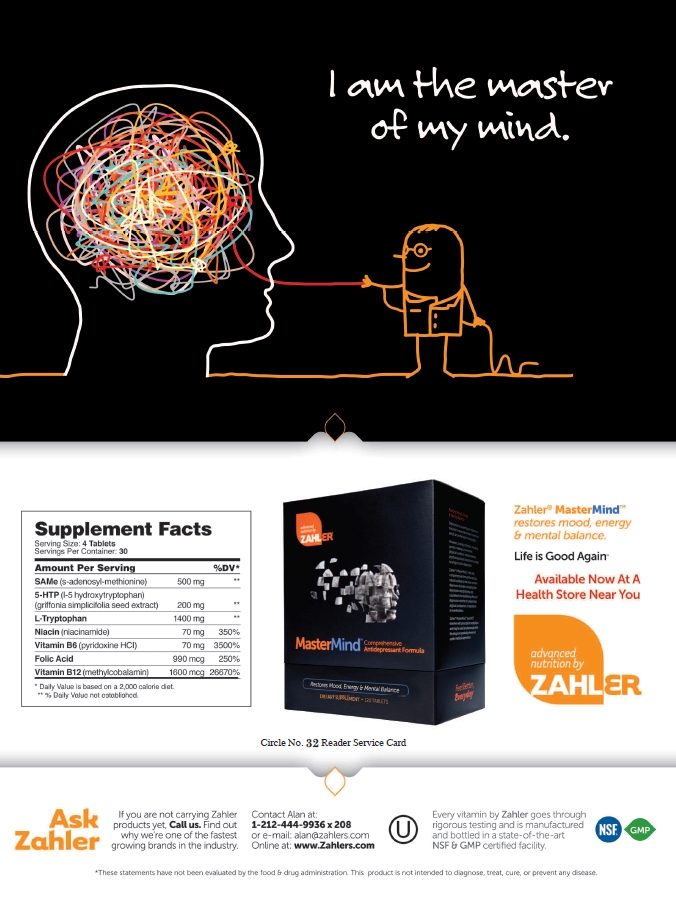 the intestinal flora remains highly responsive to dietary changes, Levin says. The number of bifidobacteria has been demonstrated to increase in the presence of inulin-type fructans. This change both occurs and disappears quickly once the prebiotics are removed.
the intestinal flora remains highly responsive to dietary changes, Levin says. The number of bifidobacteria has been demonstrated to increase in the presence of inulin-type fructans. This change both occurs and disappears quickly once the prebiotics are removed.
Fiber is also known to enhance enterohepatic circulation, Levy says. This process clears fat-soluble waste from the bloodstream and regulates the cycling of bile from the liver through the small intestine and back. This is a specific example of the general principle behind what fiber does. “Proper elimination. Fiber binds up particles and makes it easier to eliminate waste. The human body cannot keep storing waste product indefinitely without severe consequences on health and longevity,” explains Barton.
Lifton adds that one of the benefits of fiber is to slow down sugar’s absorption into the bloodstream, which he believes is a key reason that epidemiological studies, like the recent one by the government, link high-fiber diets with health and longevity. The prebiotic fibers, some of them proprietary, are already popular in the market and may have more company soon, he believes. “In addition to the traditional fiber sources, we believe that new sources of fiber coming from plant sources such as fenugreek and amla will also emerge as niche products,” Lifton says.
More to digest. There are other unique options that are known to support proper digestive function and balance. A recent trend is supplementation with bile acid to enhance digestion. Clouatre says that paradoxically, both constipation and diarrhea can be consequences of inadequate bile production or release. “In many groups of individuals, especially the elderly, clinical trials have demonstrated the effectiveness of bile acid supplementation in improving fat absorption and nutritional status,” he says, adding that malabsorption of fats can create fatty, and hence loose stools. Maintaining proper levels of bile can therefore lead to regularity.
support proper digestive function and balance. A recent trend is supplementation with bile acid to enhance digestion. Clouatre says that paradoxically, both constipation and diarrhea can be consequences of inadequate bile production or release. “In many groups of individuals, especially the elderly, clinical trials have demonstrated the effectiveness of bile acid supplementation in improving fat absorption and nutritional status,” he says, adding that malabsorption of fats can create fatty, and hence loose stools. Maintaining proper levels of bile can therefore lead to regularity.
A dietary whey described by Sheets, produced by lacto fermentation of organic Swiss milk, acts like a prebiotic in that it supports the right balance of digestive flora. A lack of acid-producing flora, she says, allows the proliferation of fungi, and digestive complaints like stomach cramps, bloating and constipation can result. “Lactic acid is present in every organized life form and has historically been used in Europe and Asia for food conservation. Today it is considered a biochemical key player in cellular and whole body metabolism,” says Sheets.
She says that this support of healthy gut flora, improved lactose tolerance and resorption of minerals in the small intestine are all established benefits of L (+) lactic acid. It also stimulates the secretion of digestive juices, has an antimicrobial effect and supports healthy cholesterol levels. The body naturally produces L (+) lactic acid, but aging, stress, poor diet and lack of exercise cut down on production. This is where the dietary whey ingredient (Molkosan from Bioforce USA) comes in. It contains high levels of L (+) lactic acid with no lactose or calories. Sheets says the company is currently researching the effect of the ingredient on metabolic syndrome and impaired glucose tolerance. One clinical trial showed a significant effect on the regulation of blood sugar after the intake of sugar.
 Hydrochloric acid, as we have learned, is an important backdrop to digestion in the stomach. Aging, poor diet and OTC medicines like Zantac and Pepcid can hamper its production. Kidd informs us that hydrochloric acid can be supplemented with, and notes that his company offers it in combination with gentian, an herb that he says helps tone the digestive tract.
Hydrochloric acid, as we have learned, is an important backdrop to digestion in the stomach. Aging, poor diet and OTC medicines like Zantac and Pepcid can hamper its production. Kidd informs us that hydrochloric acid can be supplemented with, and notes that his company offers it in combination with gentian, an herb that he says helps tone the digestive tract.
The rhythmic peristaltic contractions of the digestive tract move along food contents from ingestion to elimination. Says Kidd, “The essential mineral magnesium is necessary for these muscle systems to generate energy and to maintain healthy tone, yet modern food processing techniques deplete many foods of their magnesium content and magnesium deficiency is widespread.” Magnesium glycinate, he says, supplies both highly absorbable magnesium and glycine, a building block of glutathione. Known as the foremost antioxidant at the cellular level, Kidd says glutathione is also tasked with regulating enzyme activity.
A botanical ingredient derived from the perilla plant (Benegut from Vital Solutions) combines prokinetic and antispasmodic benefits, adding up to a balancing effect on bowel function, according to Lifton. He also points to a formula that combines zinc carnosine, which helps rebuild the stomach lining, with a proprietary licorice extract for indigestion relief, artichoke leaf extract for regularity and ginger to reduce bloating. Lifton says, anecdotally, that quality of life improvements can be had with combinations such as these. WF
|
Digestive Health Offerings The products and ingredients listed below are available from the companies interviewed in this piece. American Health: Original Papaya Enzyme, Super Papaya Enzyme, Papaya Enzyme with Chlorophyll, Enzyme Probiotic Complex Dual-Action, Digest HPE Advanced Activity, Probiotic Acidophilus Liquid Culture, Acidophilus And Bifidum Chewables, Pineapple Enzyme Bromelian, Probiotic Acidophilus with Citrus Pectin. Bioforce USA: A Vogel Molkosan, A Vogel Digestive Aid, A Vogel Liver and Gallbladder Liquid and Tablets. Doctor’s Best, Inc.: Best Digestive Enzymes, Betaine HCl Pepsin and Gentian Bitters, PepZin GI, Best Fermented Superfoods, Best NAC Detox Regulators, Best MSM, Best Fully Active Folate, Best Fully Active B12. Enzymedica, Inc.: CarbGest, Digest, Digest Basic, Digest Gold, Digest Gold + Probiotics, Digest Spectrum, Kids Digest Chewables, Reduce, Slender GR, Acid Soothe, GlutenEase 2X. Ganeden Biotech, Inc.: GanedenBC30. Jarrow Formulas, Inc.: Jarro-Zymes Plus, Bile Acid Factors, Jarro-Dophilus EPS, Ideal Bowel Support 299v. National Enzyme Company: BioCore Optimum & Optimum Complete, BioCore Edge, BioCore Dairy & Dairy Ultra, BioCore DPPIV, BioCore Lipo, BioCore Pro, CereCalase, Isolase, BioCore AR, BioCore Kids, Full Spectrum. Nebraska Cultures: DDS-1 (Lactobacillus acidophilus), ProDURA (Bacillus coagulans). Nordic Naturals: Omega Probiotic. NOW Foods: HCL-Pepsin capsules, Bromelain tablets and capsules, Pancreatin, Dairy Digest Complete, Gluten Digest, Papaya Enzyme Chewable, Lipase, Cellulase, Alpha-amylase, Protein Digest, Super Enzyme tablets, Optimal Digestive System, Digest Platinum, Acid Comfort, DGL Lozenges, Ulcetrol, Aloe vera, FOS and Inulin prebiotics. Quality of Life Labs: ProbioPure (Morinaga BB536 bifidobacterium longum), Peptisol, Kinoko Gold AHCC. ReNew Life Formulas: DigestMore Ultra, Ultimate Flora, Shelf Stable Probiotic, GasStop, LactoseStop, IndigestionStop, ConstipationStop, CandiZyme, Fiber-Tastic!, FiberSMART. Sabinsa Corp.: LactoSpore, Fenumannan, LactoWise, Digezyme, Fabenol. Wakunaga of America Co.: Kyolic Formula 102 Candida Cleanse and Digestion, Kyo-Dophilus, Kid’s Kyo-Dophilus, Kyo-Dophilus 9, Kyo-Dophilus One Per Day, Kyo-Dophilus with Enzymes. |
References
1. J.E. Morley, “The Aging Gut: Physiology,” Clin. Geriatr. Med. 23(4), 757–767 (2007).
2. “Epilepsy: Vagus Nerve Stimulation (VNS),” WebMD, www.webmd.com/epilepsy/guide/vagus-nerve-stimulation-vns, accessed Jan. 30, 2013.
3. J.E. Everhart, editor, “The Burden of Digestive Diseases in the United States,” U.S. Department of Health and Human Services, Public Health Service, National Institutes of Health, National Institute of Diabetes and Digestive and Kidney Diseases. Washington, DC: US Government Printing Office, 2008; NIH Publication No. 09-6443.
4. J. Blum, “Evaluation of a Novel Supplement to Reduce Blood Glucose through the Use of a Modified Oral Glucose Tolerance Test,” Am. J. Transl. Res. 3 (2), 219–25 (2011).
5. M. R. Sudha, et al., “Clinical Study of Bacillus coagulans Unique IS-2 (ATCC PTA-11748) in the Treatment of Patients with Bacterial Vaginosis,” Indian J. of Microbiol. 52 (3), 396–399 (2012).
6. J.D. Ferrer, et al., “Probiotic Supplement (Lactobacillus Acidophilus and Bulgaricus) Utility in the Treatment of Irritable Bowel Syndrome,” Rev. Gastroenterol. Peru. 32( 4), 387–393 (2012).
7. A. Gardner, “Antibiotic May Ease Irritable Bowel Syndrome,” Health.com, http://www.cnn.com/2011/HEALTH/01/05/antibiotic.irritable.bowel.syndrome.health/index.html, accessed Jan. 31, 2013.
8. M. McMillen, “Whole Grain Fiber Linked to Longer Life,” Health.com, www.cnn.com/2011/HEALTH/02/14/fiber.lifespan/index.html, accessed Jan. 31, 2013.
Published in WholeFoods Magazine, March 2013

